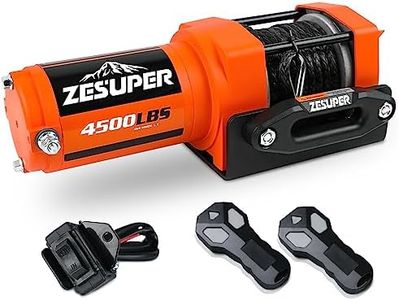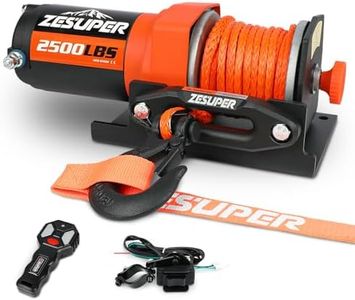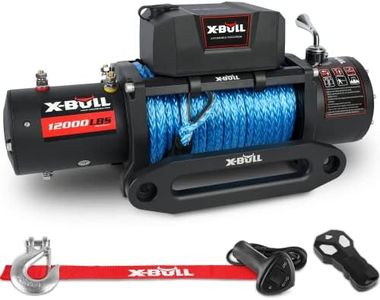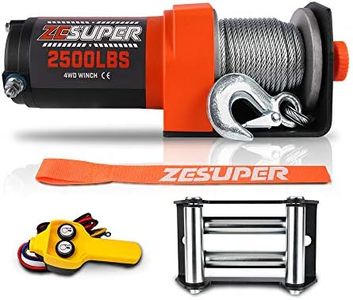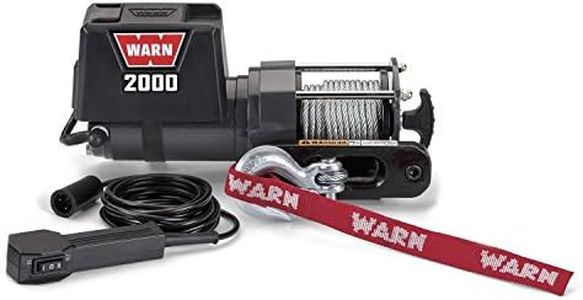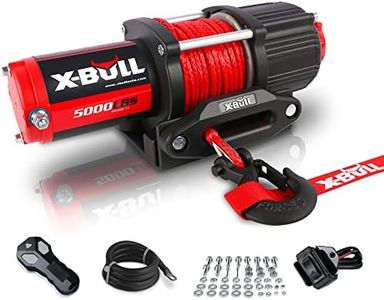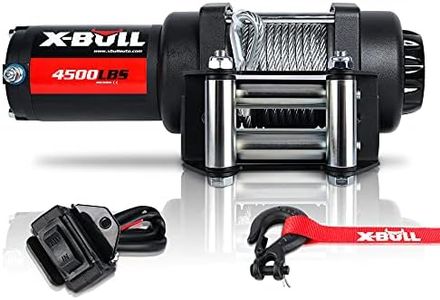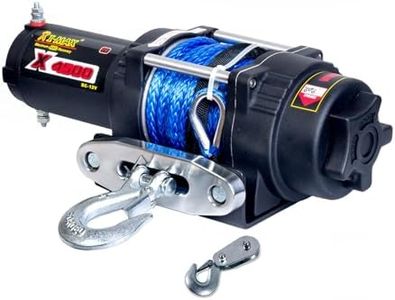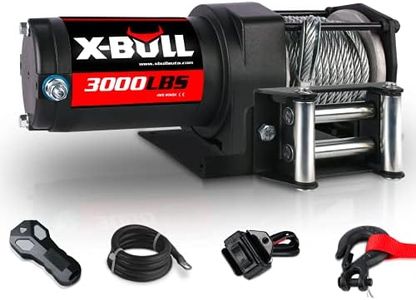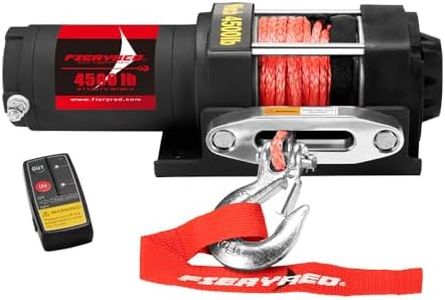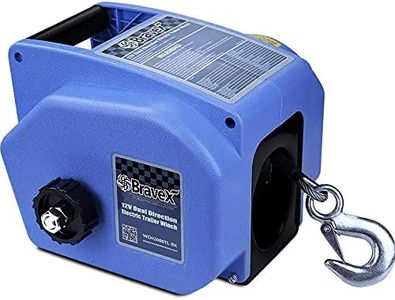We Use CookiesWe use cookies to enhance the security, performance,
functionality and for analytical and promotional activities. By continuing to browse this site you
are agreeing to our privacy policy
10 Best Electric Trailer Winches
From leading brands and best sellers available on the web.Buying Guide for the Best Electric Trailer Winches
Choosing the right electric trailer winch can make loading and unloading your trailer much quicker, safer, and easier. To find the best fit for your needs, you should understand what each key specification means and how it affects performance. Matching the winch's capabilities to your typical tasks will help you make a smart and satisfying purchase.Pulling Capacity (Rated Line Pull)This spec refers to the maximum weight the winch can safely pull, usually measured in pounds or kilograms. It's important because it determines whether the winch can handle your trailer load. Winches usually come in ranges like light (up to 3,500 lbs), medium (3,500-7,000 lbs), and heavy duty (over 7,000 lbs). To select the right pulling capacity, add up the weight of the objects you'll most commonly be pulling, and add a safety margin (typically 50% more than the heaviest load). This ensures the winch isn't overworked and lasts longer.
Motor PowerMotor power is given in volts or horse power (HP) and affects how quickly and easily the winch can pull a load. A stronger motor suits heavier loads and frequent use, while a smaller motor is usually fine for lighter and occasional jobs. Most trailer winches are 12V, which works well with a standard vehicle battery. If your tasks are demanding, go for a winch with a more powerful motor. For occasional light use, a standard motor is usually sufficient.
Line SpeedLine speed describes how fast the winch can spool the cable in, usually listed as feet per minute. Faster line speeds mean jobs get done quicker, but can place more stress on the winch and make control a bit trickier. Slow line speeds might be safer and provide better control for precision work. Choose a line speed that matches your need for speed versus control — if you're often in a hurry, a faster speed is helpful; if safety and accuracy matter most, slower speeds are preferable.
Cable Type and LengthWinches typically use either steel cable or synthetic rope. Steel cable is tough and durable for rugged use, but it's heavy and can develop sharp frays over time. Synthetic rope is lighter, safer to handle, and floats on water, but it needs a bit more care to avoid abrasion. Cable length varies — longer cables offer more versatility for distant pulls but can lower the winch's pulling power when extended. Pick cable type and length based on your handling preference, safety concerns, and typical trailer distance from the pulling point.
Control TypeWinch controls come as wired (directly attached to the winch) or wireless (remote control). Wired controls are simple and reliable but limit your movement. Wireless remotes give freedom to operate the winch from a safe distance and different angles, which is handy for tricky situations. If you value ease and flexibility, consider models with wireless controls; for simplicity and reliability, wired controls may be best.
Mounting OptionsThis spec details how and where the winch can be attached to your trailer. Some winches are designed for permanent mounting, while others are portable and can be moved between trailers. Secure and appropriate mounting is crucial for safe operation, so choose a mounting option that fits your trailer type and how often you may want to use the winch in different settings.
Safety FeaturesCommon safety features include automatic braking, overload protection, and emergency stop switches. These features prevent accidents, ensure safe operation, and protect both the user and the equipment. If safety is a primary concern — for example, if you work alone or in unpredictable environments — prioritize winches with better safety features.
